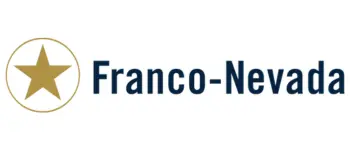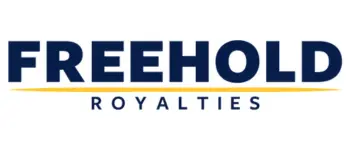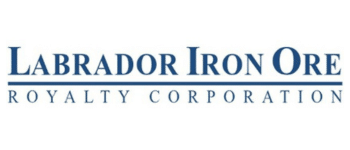Let’s Look Over These Canadian Royalty Stock Powerhouses
Key takeaways
Royalty stocks offer stable, passive income – Since they earn revenue from top-line sales rather than managing operations, royalty companies provide reliable cash flow and attractive dividends.
Diversification across industries reduces risk – The Canadian royalty sector spans fast food, mining, and energy, allowing investors to gain exposure to different markets while minimizing operational uncertainties.
Commodity price sensitivity remains a key factor – While royalty companies avoid direct operational risks, their revenues are still tied to factors like oil, gold, and iron ore prices, making them dependent on broader market trends.
3 stocks I like better than the ones on this list.Canada is home to a broad range of royalty companies and structures. In this piece, I plan to shed light on a selection of them, while also pointing out some of the strongest ones in the country.
I plan to cover a wide variety of royalty companies as well. I’ll highlight gold and energy streamers, precious metal producers, and even restaurant royalties.
First, lets dive into how they work.
What is a royalty stock, and how do they work?
To highlight the business model of a royalty company, let’s first use two non-royalty examples, Restaurant Brands International (TSE:QSR) and Agnico Eagle Mines (TSE:AEM).
To generate earnings, these companies, along with many other Canadian stocks, must build restaurants/mines, hire staff, and operate distribution networks to deliver goods, among many other business operations.
This can lead to volatile results overall, particularly in climates of volatile commodity prices and inflation. For example, the price of livestock and even wage pressures could erode the earnings of a company like RBI. And for a company like Agnico, rising gasoline prices and equipment costs can impact earnings.
With a royalty, the business model is much easier, and for the most part, there is no exposure to the business’s daily operations.
A restaurant royalty, for example, may take a percentage of a restaurant’s revenue for the rights to utilize its trademark. So even if wages go up or the price of its food goes up, considering the royalty fund takes its chunk of the pie before these expenses are factored in, cash flows are much more stable.
It gets a bit more complex with companies and royalties in the mining sector. However, this basic introduction to a royalty company should give you a basic understanding of how they work.
Canadian royalty stocks are a popular investment vehicle for those seeking a strong passive income stream. Their business structures are often simplistic and allow for consistent revenue generation and, thus, consistent distributions.
So, with that bit of knowledge, let’s now dig into some of the top royalty companies in the country to buy today.
What are the top Canadian royalty stocks to buy right now?
A leading gold-focused royalty and streaming company
Franco-Nevada (TSE:FNV)

Franco-Nevada is one of the world’s largest royalty and streaming companies, primarily focused on gold, but also exposed to silver, oil, and other resources. Instead of mining itself, the company finances mining projects in exchange for a percentage of production or revenue. This model offers exposure to commodity prices without the risks of mine development and operations.
P/E: 58.1
5 Yr Revenue Growth: 6.3%
5 Yr Earnings Growth: 10.0%
5 Yr Dividend Growth: 8.4%
Yield: 0.9%
Collects royalties from oil and gas production across North America
Freehold Royalties (TSE:FRU)

Freehold Royalties owns mineral rights and collects royalties from oil and gas producers operating on its land. Unlike exploration and production companies, Freehold doesn’t drill or manage operations, making it a lower-risk way to gain exposure to the energy sector. With assets in both Canada and the U.S., it benefits from diverse revenue streams.
P/E: 11.6
5 Yr Revenue Growth: 17.1%
5 Yr Earnings Growth: 89.6%
5 Yr Dividend Growth: 11.4%
Yield: 9.4%
Earns royalties from iron ore production in Newfoundland
Labrador Iron Ore Royalty (TSE:LIF)

Labrador Iron Ore Royalty owns a stake in Iron Ore Company of Canada (IOC) and earns revenue through royalties on iron ore production. IOC is a major producer of high-quality iron ore pellets and concentrate, primarily exporting to global markets. As a royalty holder, LIF benefits from IOC’s production without bearing mining risks.
P/E: 10.8
5 Yr Revenue Growth: 3.2%
5 Yr Earnings Growth: -3.2%
5 Yr Dividend Growth: 24.6%
Yield: 10.3%
Canada’s Cheapest Pizza Chain
Pizza Pizza Royalty Corp (PZA.TO)

Pizza Pizza Royalty Corp through its subsidiary, Pizza Pizza Royalty Limited Partnership, owns and franchises quick-service restaurants under the Pizza Pizza and Pizza 73 brands. It receives the benefit of Pizza Pizza Royalty and Pizza 73 Royalties, as well as royalty payments under the international agreement, indirectly through its interests in the partnership.
P/E: 15.0
5 Yr Revenue Growth: 2.1%
5 Yr Earnings Growth: 2.0%
5 Yr Dividend Growth: 1.7%
Yield: 6.5%
Overall, these are 4 strong Canadian royalty options that will generate strong passive income streams
Whether you’re looking for exposure to a casual dining restaurant, the mining industry, the oil and gas sector, or iron ore, these 4 options should help you.
Companies with royalty interests generally are popular among the passive income crowd searching for Canada’s best dividend stocks, particularly those who want exposure to cyclical sectors without the volatile movements in share price and earnings.


